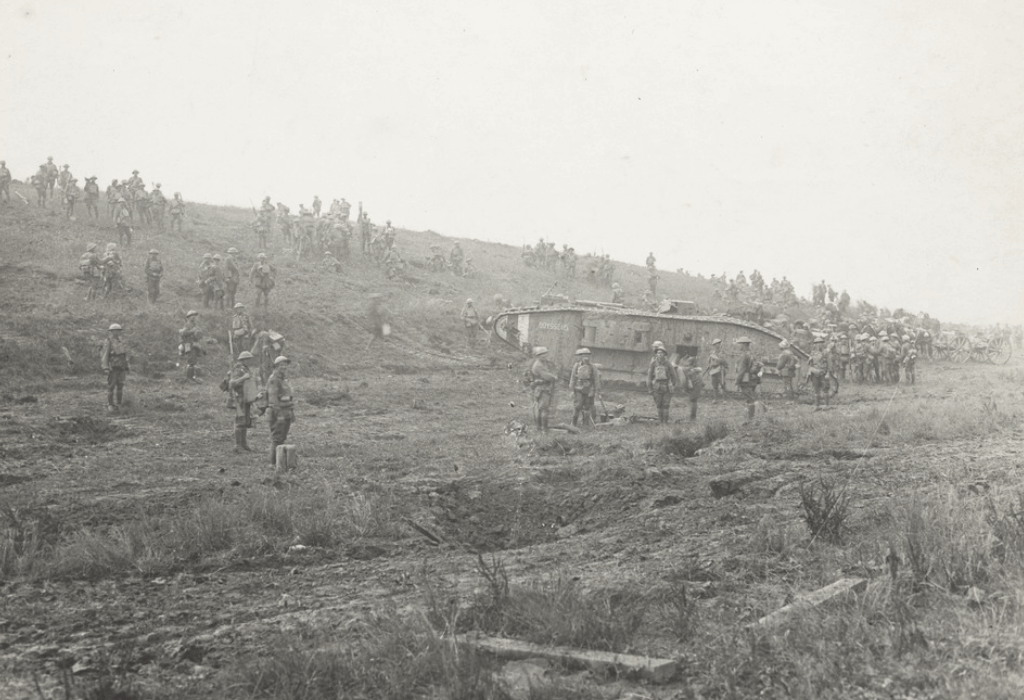One hundred years ago, the Great War ended after four years of death and destruction. Cassie Mercer speaks with author Professor Peter Stanley to understand more about what Australian troops were doing in those last few years of the war.
The Great War left an indelible mark on thousands of Australian families. Men and women signed up in their droves for the ‘adventure’, only to realise once they arrived on Gallipoli and the Western Front that the reality was very different. Historian Professor Peter Stanley’s interest in the Great War comes through its magnitude as a great human drama, one that touched the lives of millions worldwide, and shaped the world for generations.
When the Great War officially ended at 11am on 11 November 1918, Australians were still involved in the action, as Professor Stanley explains. “The five Australian divisions on the Western Front had been withdrawn from the front line early in October, but in the days before the Armistice they were marching back towards the fighting. While no Australian infantry died in action in the war’s final days, Australian airmen and gunners were in action still, and of course many men died of wounds inflicted during the heavy fighting in the war’s final ‘100 days’,” he says.

The long-awaited news of the armistice reached troops on the front very quickly. “The troops knew immediately,” says Professor Stanley. “All units received the signals distributed by signallers, wireless and telephone early on 11 November advising them that fighting would cease at 11am.”
After the campaigns on the front, losing mates and missing family, the exhausted troops were quite subdued on hearing the news that peace had finally arrived. Professor Stanley’s favourite eyewitness account is that from a memoir by an AIF field ambulance corporal. “He described hearing the news while marching back towards the front line from ‘a car of shrieking brass hats [staff officers], waving their caps and yelling that the war was over’. His mates shouted ‘Garn, yer silly bastards’, and recalled that ‘there was no great elation or hysterical outburst … the war was over, and the question was ‘How soon can we get home?'”
Meanwhile, on the other side of the world, Australia was quick to learn of the news as well. Almost too quickly, says Professor Stanley. “As I describe in my chapters of ‘The War at Home’ (2015), rumours of an armistice swept Australia on 9 November, causing premature jubilation, until it was confirmed on the 11th and celebrated on the 12th. Word came very swiftly, by international cable and domestic telegraph lines.
Professor Stanley has research and written 12 books that deal with the Great War, and says it’s remarkably easy to trace Australian soldiers due to the amazing resources we have at our disposal, many of which are online.

“I start with the UNSW Canberra AIF database (run out of the office next to mine), and follow up personnel files held by the National Archives of Australia (series number B2455) – which are all digitised. I have also used many court-martial records in National Archives (series number A471). Researching British and Indian soldiers (as I have done during the centenary) is much harder, but when you can find files in the National Archives of India they are often revealing, for example, listing the location and severity of wounds for Sikh or Gurkha men. I used the Great War collections of the National Library of Australia to write ‘The Crying Years: Australia’s Great War’ in 2017 – a neglected source, I think,” says Professor Stanley. “The best records are often the most personal, such as letters and diaries, often found in state and local collections in Australia, and country and regimental collections in Britain – the trick is to be persistent and think laterally about where the records might be held.
“And I’ve often used records on Ancestry, notably for my 2015 book ‘Lost Boys of Anzac’, which traced the 101 men of the very first wave of Australians to land on Gallipoli who died on 25 April, and my 2019 book ‘Terriers in India’, which is the first book ever published on British Territorial soldiers in India during the war. It’s often hard to find British soldiers, but Ancestry allows you to find them as civilians and piece together their stories on and off the battlefield. That makes it a goldmine of information.”
Professor Stanley is based at the University of NSW, Canberra. His book ‘Bad Characters: Sex, Crime, Mutiny, Murder and the Australian Imperial Force’ jointly won the Prime Minister’s Prize for Australian History in 2011. His next book will be ‘Terriers in India: British Territorials 1914-19’, to be published by Helion & Co UK.
Cassie Mercer
Cassie Mercer is an editor based in Sydney. She founded the award-winning magazine Inside History in 2010, creating a following of 60,000+ readers and working with Australia’s key cultural institutions to bring the nation’s history to life across Inside History’s multi-channel platforms. The history bug struck her when she discovered the story of her 5x great grandparents – in the late 1700s, one was a highwayman in Dublin and the other was the madam of a brothel, of the Lower Sort.